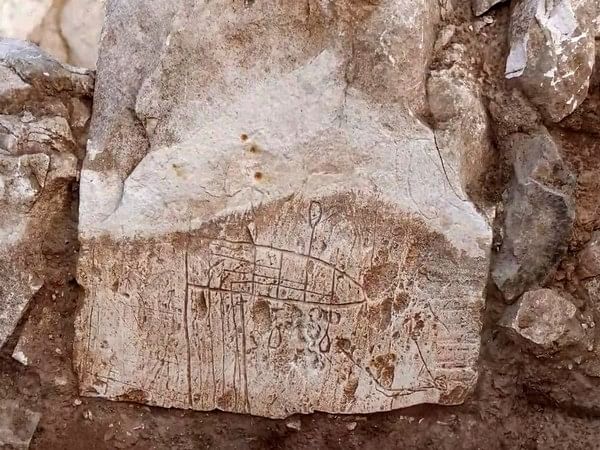Tel Aviv [Israel], May 23 (ANI/TPS): Israel archaeologists excavating an area of a Negev town slated for expansion discovered a 1,500-year-old Byzantine era church wall with a drawing of a ship, the Israel Antiquities Authority announced on Thursday.
“This discovery is like a greeting from Christian pilgrims who arrived by ship at the Gaza port,” said excavation directors Oren Shmueli, Dr. Elena Kogan-Zehavi, and Dr. Noe David Michael of the Israel Antiquities Authority. “These pilgrims made their first inland stop at this church in Rahat before continuing their journey to other significant Christian sites throughout the country.”
The church lies adjacent to an ancient Roman road connecting the Mediterranean port of Gaza to Beer-Sheva, the main city of the Negev. The presence of a church suggests Rahat was a waypoint for pilgrims traveling to Christian holy sites in Jerusalem, Bethlehem, and to monasteries in the Negev and Sinai.
“The site provides a vivid snapshot of settlement patterns in the Northern Negev during the transition from the Byzantine to the Early Islamic period,” the excavation directors noted.
According to Prof. Deborah Cvikel of the University of Haifa, the ship drawings adorning the walls reveal the modes of travel and maritime life of early Christian pilgrims.
“One of the ships drawn on the church walls is depicted as a line drawing, but yet it may be discerned that its bow is slightly pointed and that there are oars on both sides of the vessel. This may be an aerial depiction of the ship, though it seems the artist was attempting a three-dimensional drawing, Cvikel said. “Ships or crosses left by visiting Christian pilgrims as witness to their visit are also found in Jerusalem’s Holy Sepulchre church.”
Another drawing depicts an apparent two-masted ship. The main mast has no sail but seems to show a small flag in its upper section. The foremast is slightly raked towards the bow and bears a sail known as an artemon, indicating the artist’s familiarity with nautical life. However, the drawing was found upside down.
“The person placing the stone during construction was either unaware it bore a drawing, or did not care,” Cvikel explained.
With a population of more than 79,000, Rahat is the largest Bedouin city in the world. The excavations, which have been ongoing for several years, aim to integrate the historical heritage with modern development.
The newfound church walls will be presented to the public along with other archaeological finds at the Rahat Municipal Cultural Hall on June 6. (ANI/TPS)
This report is auto-generated from ANI news service. ThePrint holds no responsibility for its content.



